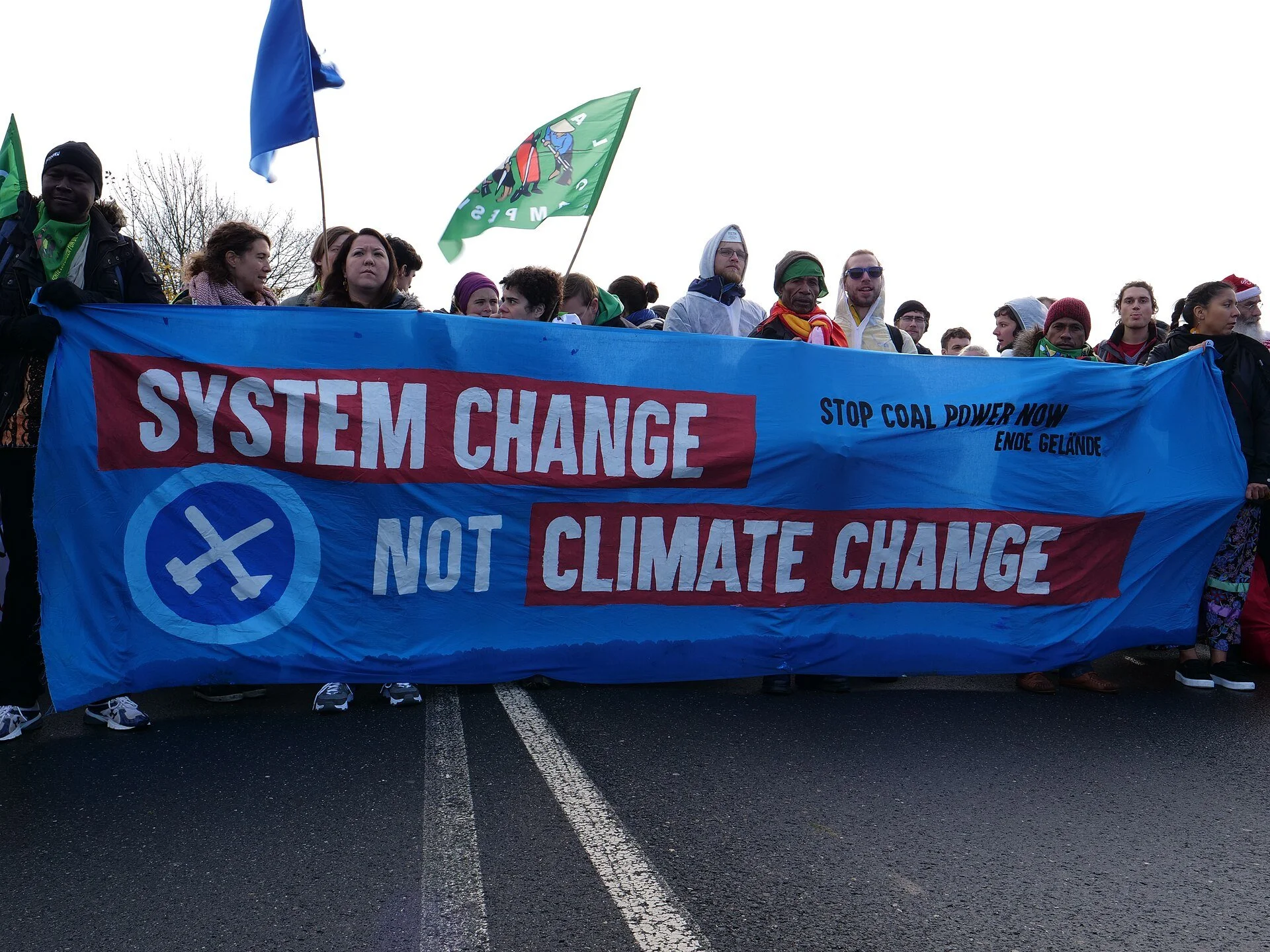From ecoRI News (ecori.org)
The fact that the planet has a fever isn’t debatable. The millions of dollars lackeys for the fossil-fuel industry spend to discredit climate science doesn’t change reality.
Nearly 100 percent of climate scientists agree that human activity, most notably the burning of fossil fuels, is changing life on Earth — and not for the better, especially for humans.
It’s been more than five decades since scientists first expressed concern to a U.S. president about the dangers of a changing climate. Last year’s Fourth National Climate Assessment — the work of 13 federal agencies and 350 scientists — is crystal clear: The planet is warming faster than at any time in human history, and humans are causing it.
Seventeen of the 18 warmest years in the 136-year climate record have occurred since 2001, according to the National Aeronautics and Space Administration.
At least 18 scientific societies in the United States, including the Union of Concerned Scientists, have issued official statements about manmade climate change.
Despite this scientific consensus, climate-change deniers are still given airtime by the same media outlets that nightly report on floods, tornadoes, wildfires, and other extreme weather. Many of the same people being left homeless by a feverish Mother Nature vote for politicians who deride climate solutions.
Deniers ignore a public that is increasingly concerned about the impacts of climate change. A recent survey conducted by Yale University’s Program on Climate Change Communications found that 53 percent of Americans believe global warming is harming their local community and 57 percent believe fossil-fuel companies have either “a great deal” or “a moderate amount” of responsibility for the damages caused by climate change.
Deniers also ignore the fact that internal research by fossil-fuel companies supports the scientific consensus on climate change. But they plow ahead anyway with their campaign of misinformation, even as lawsuits are filed to hold the industry accountable for the climate impacts it knew would occur. Like the tobacco industry, the fossil-fuel industry minimized the negative health impacts of its products so it could operate unchecked. Some of the same shills, such as Steve Milloy, who protected tobacco profits at the expense of public health are using the same playbook to protect hydrocarbons.
“Scientific misinformation undermines public understanding of science, erodes basic trust in research findings and stalls evidenced-based policymaking,” according to a paper published in March in the science journal Nature.
The paper’s three authors noted that in April 2018 then-Environmental Protection Agency administrator Scott Pruitt signed a rule that would sharply reduce the number of scientific studies the federal agency can take into account, “effectively limiting the agency’s ability to regulate toxic chemicals, air pollution, carbon emissions and industries that science has already shown to have lethal impacts on human and environmental health.”
Milloy, a member of President Trump’s EPA transition team, said the rule to end “secret science” by “taxpayer-funded university researchers” is “one of my proudest achievements.”
In an interview with The New Yorker, Milloy defended his achievement by saying, “I do have a bias. I’m all for the coal industry, the fossil-fuel industry. Wealth is what makes people happy, not pristine air, which you’ll never get.”
Fossil-fuel front groups are paid to lie and misrepresent facts, all in the name of protecting polluting billionaires. (istock)
A dark place
Six years ago, Drexel University environmental sociologist Robert Brulle, now a visiting professor of environment and society at Brown University, published an analysis that found conservative foundations, such as the Howard Charitable Foundation, the John William Pope Foundation, the Sarah Scaife Foundation, and Searle Freedom Trust, provided the largest and most-consistent money stream to the denial movement. Much of that secret funding is now commonly referred to as “dark money.”
Here in Rhode Island, denial propaganda is spread by the Rhode Island Center for Freedom and Prosperity, with such headlines as “LAWSUIT: Center calls on RI Attorney General to release ‘secrecy pact’ documents re. cabal’s climate change inquisition” and “Center Plays Role in Lawsuit Against RI Attorney General for Climate Change Conspiracy Documents.”
The organization’s efforts are likely supported, at least in part, with money from special interests, but finding information on its website about how the center is funded is no easy task.
SourceWatch outlines the Center for Freedom and Prosperity’s strong ties to Koch-funded organizations such as the State Policy Network — a group that touts the free market as the panacea to all ills and rails against government regulation — and the American Legislative Exchange Council (ALEC), a corporate bill mill.
The Center for Freedom and Prosperity, the foundations mentioned above, and other front groups all have one thing in common: they discredit science and attack knowledge to undermine government intervention and muddy the warming waters when it comes to climate change.
The are paid to consistently lie and misrepresent facts — all in the name of protecting polluting billionaires. They routinely claim, without evidence, that climate initiatives will hurt the economy, increase cost for ratepayers, and slow job creation. They argue that climate mitigation is a hidden tax, some violation of the free market, or unconstitutional overreach.
All of this fossil-fuel-powered propaganda is, to borrow a favorite denial-group phrase, fake news, but this dark-money campaign does corrupt politics, both locally and nationally, by pressuring politicians and policymakers to protect private wealth interests at the expensive of, well, everything. This clandestine operation makes having honest and open discussions about how to mitigate the very-real impacts of climate change nearly impossible. And that’s the point.
Brulle’s 2013 study was among the first academic efforts to probe the web of funding supporting the denial movement. It found that the amount of money flowing through third-party foundations, whose funding can’t easily be traced, had risen dramatically since 2008.
Brulle found that from 2003 to 2010, for example, 140 foundations funneled $558 million to nearly 100 climate-denial organizations. He also found that the traceable cash flow from more traditional sources, such as Koch Industries and ExxonMobil, had dried up.
From 2003 to 2007, Koch Affiliated Foundations and the ExxonMobil Foundation were “heavily involved” in funding denial efforts, according to Brulle’s research. He found, however, that ExxonMobil hadn’t made a publicly traceable contribution since 2008, and that the Koch brothers’ public contributions had been dramatically reduced.
There is evidence of a trend toward concealing the sources of climate-denial funding through the use of donor-directed philanthropies, according to the study.
The study concluded public records identify only a fraction of the hundreds of millions of dollars supporting climate-denial efforts. An examination of various metrics, including Internal Revenue Service data, Brulle’s research found that 91 “climate change counter-movement” organizations have an annual income of some $900 million, with an annual average of $64 million in identifiable foundation support.
“The climate change countermovement has had a real political and ecological impact on the failure of the world to act on global warming,” Brulle wrote in a statement when his study was released. “Like a play on Broadway, the countermovement has stars in the spotlight — often prominent contrarian scientists or conservative politicians — but behind the stars is an organizational structure of directors, script writers and producers.
“If you want to understand what's driving this movement, you have to look at what’s going on behind the scenes. Without a free flow of accurate information, democratic politics and government accountability become impossible. Money amplifies certain voices above others and, in effect, gives them a megaphone in the public square.”
Sen. Sheldon Whitehouse says the U.S. Chamber of Commerce, along with the National Association of Manufacturers, are the two biggest front groups for the fossil-fuel industry.
Front-group follies
It’s difficult to comprehend what climate change is delivering, and those who do understand are disparaged, threatened, and called greedy — apparently, federal grants are making them rich.
Much of this noise is mass-produced by the U.S. Chamber of Commerce, the National Association of Manufacturers, the American Petroleum Institute, and other front groups for the fossil-fuel industry. They all have well-funded lobbying arms and links to dark-money sources. They use both to block climate-mitigation efforts at every level.
In 2009, for instance, the U.S. Chamber of Commerce submitted written comment to the EPA after the agency said greenhouse-gas emissions are a threat to public health. The business organization, which two years later would urge lawmakers to focus on expanding fossil-fuel energy production and not “high-cost energy sources” such as wind and solar, was appalled by reality.
The chamber’s written response read, in part: “The Administrator has thus ignored analyses that show that a warming of even 3 [degrees] C[elsius] in the next 100 years would, on balance, be beneficial to humans because the reduction of wintertime mortality/morbidity would be several times larger than the increase in summertime heat stress-related mortality/morbidity.”
A year later, the chamber sued the EPA, seeking to overturn its finding that climate emissions endanger public health and welfare.
That’s the kind of stupidity front groups are using to assail science, endanger public health, and put future generations at risk. The fact we’re still being governed and represented by people who spew such nonsense — last year Rep. Mo Brooks, R-Ala., a member of the House Committee on Science, Space and Technology, blamed sea-level rise on erosion and rocks falling into the ocean, saying, “Every time you have that soil or rock or whatever it is that is deposited into the seas, that forces the sea levels to rise, because now you have less space in those oceans, because the bottom is moving up.” — speaks to the power special interests wield.
The U.S. Chamber of Commerce has gone to great lengths to protect the unrelenting burning of fossil fuels. In both 2005 and ’07, the chamber opposed bipartisan cap-and trade-legislation.
In 2009, the chamber was one of the leading front groups lobbying against the Waxman-Markey cap-and-trade bill. Since the failure of that bill, the chamber’s allies in Congress have refused to hold hearings, debate, or vote on any legislation proposing reductions in carbon pollution.
The chamber has convened fossil-fuel lobbyists, lawyers, and political strategists to plot legal strategies for opposing future regulatory actions to limit carbon pollution. It led a coalition of trade groups suing to block an EPA plan to reduce carbon emissions in the electric power sector. It funded a study critical of the Paris Agreement. It spearheaded a lobbying campaign in support of a Congressional Review Act resolution to repeal a Department of Interior rule limiting methane emissions from oil and gas facilities on public lands.
The U.S. Chamber of Commerce and the National Association of Manufacturers have softened their stance on climate change somewhat in the past year or so, mainly because of increasing corporate pressure. However, the leadership of these trade/front groups is still dominated by fossil-fuel money and is loyal to a political party that has branded coal as clean.
The foundation upon which these organizations rest — the businesses they supposedly represent — is beginning to crack, as some corporations, most notably Apple, have left the U.S. Chamber of Commerce over its climate-change position, and others are following them out the denial door.
The public’s growing concern about climate change has exposed a rift between the U.S. Chamber of Commerce’s corporate members and the organization itself, according to Sen. Sheldon Whitehouse.
Sen. Sheldon Whitehouse, D-R.I., and some other D.C. lawmakers are applying pressure to this mounting relationship tension by making sure the corporate world and the public understand the negative impact fossil-fuel front groups are having on delaying solutions to a serious problem.
ecoRI News recently spoke with Whitehouse in a downtown Providence cafe. He said now that the climate-change issue has reached a level of public priority it has forced corporate America to get serious about the problem. This corporate seriousness, he added, has exposed a rift between the chamber’s members and the organization itself.
Whitehouse believes that widening this rift and exposing the front groups that are laundering denial money are the keys to addressing climate change. “All of this nonsense is funded by fossil-fuel money,” he said.
Now that House committees have subpoena power, Whitehouse said they will start digging into the “dark-money stuff.”
“There’s nothing about dark money that enjoys a legal privilege,” Rhode Island’s former attorney general said. “You just don’t have to disclose it, so they don’t. But it’s not like you can take a subpoena and say, ‘No, I don’t have to respond to that subpoena.’ All we have to do is start digging and we’ll find some very interesting stuff.”
Front groups are paid to create the appearance of public support for deregulation and to remind politicians that they may lose an election if they oppose corporate priorities, such as the burning of fossil fuels. (istock)
Follow the money
Prof. Timmons Roberts are continuing the work Brulle started nearly a decade ago.
The Climate and Development Lab at Brown University is working to shine a light on the individuals and organizations behind the climate-denial movement. The lab’s research aims to make known the vast sums spent on public-relations firms by ExxonMobil and other energy corporations to obscure what they have known for decades: that fossil-fuel emissions are destructive.
“This really is a failure to warn us that (fossil-fuel companies) know their products are going to cause all of these problems but they are not warning the public about it,” Brulle told ecoRI News earlier this year. “They are selling us the idea of oil, prosperity, and fossil fuels are all the same thing … a very, very subtle manipulation that runs into the billions of dollars over decades.”
The project has already untangled a web of denial money from oil and gas companies such as Chevron, ExxonMobil, Shell, and Texaco, and from automakers such as Ford and General Motors. These corporations fund groups such as the National Mining Association and the American Petroleum Institute, and denial groups with ambiguous names such as the Global Climate Coalition and the Cooler Heads Coalition.
The initiative profiles these groups and explains how they create the appearance of public support for deregulation, while also reminding politicians that they may lose election/re-election by opposing corporate priorities — i.e., the burning of fossil fuels.
In Rhode Island, National Grid has been one of the top opponents to legislation that would address climate emissions. The British multinational opposed seven bills that supported renewable energy and action on climate change in the General Assembly between 2012 and 2017, according to the Climate and Development Lab.
Rhode Island’s primary electric and gas utility has also donated to the front group Edison Electric Institute (EEI). The organization has opposed, or funded groups that oppose, net metering, one of the core renewable-energy policies that allow homes and businesses to sell excess solar energy to the power grid.
A 2017 report by the Energy and Policy Institute explores how regulated investor-owned utility companies are including their EEI annual membership dues in their general operating expenses. This widespread practice results in ratepayers subsidizing the political activities of EEI, which works closely with ALEC.
The Energy Council of Rhode Island also opposed seven climate and renewable-energy bills proposed at the Statehouse between 2012 and 2017, according to the Climate and Development Lab.
For 20 years, from 1997-2017, the network of players spreading misinformation about climate change has been increasingly integrated into political philanthropy, according to a study published in March by a Yale University professor.
“The study introduces a new and broader pathway through which climate change misinformation travels, beyond the tendency of research to narrowly focus on the activities of think-tanks and fossil-fuel interests, often in isolation from mainstream American institutions like philanthropy,” Justin Farrell wrote. “Yet, as this study also shows, the impact of funding from fossil-fuel sources still plays an important role, revealing that the strength of the relationship between the misinformation network and philanthropy is strongest for people and organizations directly tied to such funding.”
Farrell’s research revealed new knowledge about large-scale efforts to distort public understanding of science and sow polarization. This influence has grown in recent years with the rapid expansion of untraceable donor-directed philanthropy that enables anonymous funding to pass-through organizations such as DonorsTrust and Donors Capital Fund, according to the study titled “The growth of climate change misinformation in US philanthropy.”
Frank Carini is editor of ecoRI News.



















